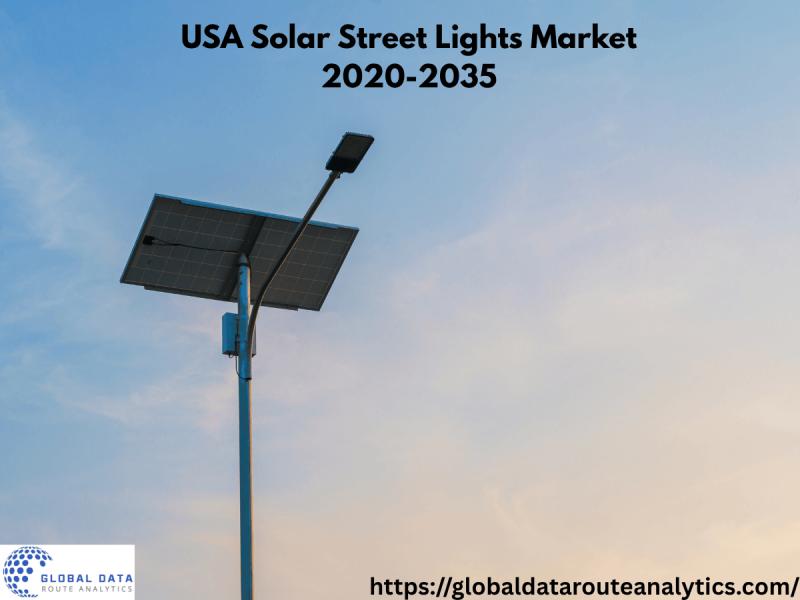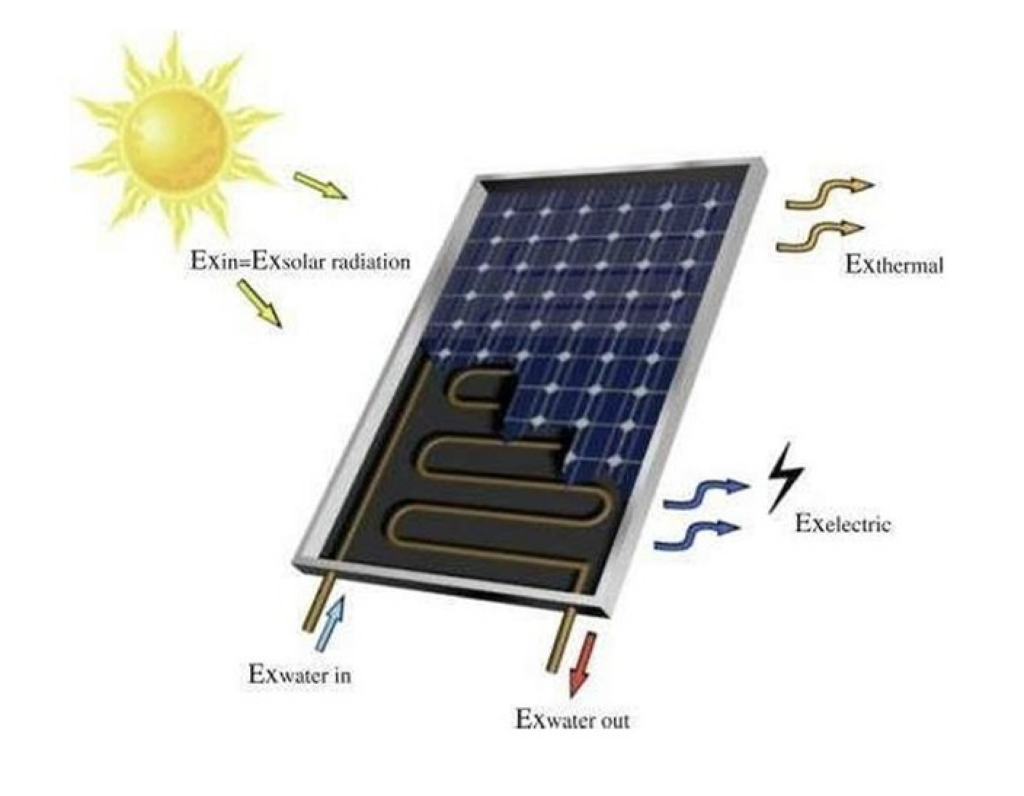Hybrid Solar Wind Energy Storage Market | Global Market Analysis Report – 2035 – Future Market Insights

Report on the Hybrid Solar Wind Energy Storage Market: A Catalyst for Sustainable Development Goals
The Hybrid Solar Wind Energy Storage Market is poised for significant expansion, directly contributing to the achievement of global sustainability targets. This report analyzes the market’s trajectory, drivers, and competitive dynamics, with a specific focus on its alignment with the United Nations’ Sustainable Development Goals (SDGs), particularly SDG 7 (Affordable and Clean Energy), SDG 9 (Industry, Innovation, and Infrastructure), SDG 11 (Sustainable Cities and Communities), and SDG 13 (Climate Action).
Market Forecast and Economic Impact
The market is projected to grow from an estimated USD 2.3 billion in 2025 to USD 5.9 billion by 2035, demonstrating a compound annual growth rate (CAGR) of 9.8%. This expansion represents a total absolute dollar opportunity of USD 3.6 billion, signifying a critical investment in the infrastructure required for a global clean energy transition. This growth not only fosters economic opportunities (SDG 8) but is fundamental to advancing climate action initiatives (SDG 13) worldwide.
Growth Phases:
- Phase 1 (2025-2030): The market is expected to reach USD 3.6 billion, driven by initial large-scale adoption and technological advancements in energy storage, contributing to resilient energy infrastructure (SDG 9).
- Phase 2 (2030-2035): Accelerated growth is anticipated, adding a further USD 2.3 billion as hybrid systems become fully integrated with smart grids and decentralized networks, enhancing access to affordable and clean energy (SDG 7).
Core Market Drivers and Alignment with SDGs
The market’s expansion is propelled by factors that are intrinsically linked to global sustainability objectives. The increasing adoption of these systems is a direct response to the urgent need for decarbonization and resilient energy solutions.
Key Growth Factors:
- Global Decarbonization Efforts (SDG 13): The primary driver is the global commitment to reducing carbon emissions. Hybrid systems provide a stable and reliable renewable energy source, mitigating the intermittency of solar and wind power.
- Energy Reliability and Infrastructure Modernization (SDG 9): The need for grid stability and modernization is fueling demand. Hybrid storage systems enhance load balancing and support the development of resilient, smart energy infrastructure.
- Supportive Government Policies (SDG 7): Clean energy mandates, financial incentives, and supportive regulatory frameworks are accelerating the adoption of hybrid systems, making clean energy more accessible and affordable.
- Energy Security and Independence: Volatility in fossil fuel markets reinforces the strategic shift toward self-sufficient and decentralized renewable energy models, contributing to national energy security and sustainable community development (SDG 11).
Segmental Analysis: Contribution to Sustainable Infrastructure
Analysis by Product Type
The Grid-connected segment is projected to dominate the market, accounting for 58.4% of the share in 2025. This segment is crucial for large-scale integration of renewables into national power grids, directly supporting the development of sustainable and resilient infrastructure (SDG 9). These systems are vital for stabilizing grids, reducing energy curtailment, and enabling the broader transition to a low-carbon economy as mandated by SDG 13.
Analysis by End-Use Application
The Utility/Industrial segment is expected to lead with a 61.2% market share in 2025. This dominance highlights the critical role of hybrid systems in helping energy-intensive sectors meet stringent carbon reduction targets (SDG 13) and transition towards sustainable industrial practices (SDG 9). For industries, these systems offer enhanced energy autonomy and a reliable power supply, reducing reliance on fossil fuels.
Regional Market Analysis and Global SDG Contribution
Regional growth patterns reflect varying commitments and strategies toward achieving the SDGs. Asia-Pacific is leading in deployment, while Europe and North America are advancing through technological innovation.
China
Projected to grow at a 13.2% CAGR, China’s market expansion is driven by its national goal of carbon neutrality. Massive investments in renewable infrastructure directly support SDG 7 and SDG 13, while ensuring stable power for both urban and rural development (SDG 11).
India
With a forecasted CAGR of 12.3%, India’s growth is aligned with its ambitious renewable energy targets. The deployment of hybrid systems is critical for providing uninterrupted power to its industrial sectors and advancing rural electrification, a key component of ensuring affordable and clean energy for all (SDG 7).
Germany
Germany’s market is expected to grow at an 11.3% CAGR, fueled by its aggressive energy transition (Energiewende). The focus on integrating storage with renewables is essential for grid balancing and achieving its greenhouse gas reduction commitments under SDG 13.
United Kingdom
The UK market is projected to grow at a 9.3% CAGR, underpinned by its legally binding net-zero emissions target. Hybrid systems are integral to ensuring grid stability and energy security as the nation phases out fossil fuels, contributing to both SDG 7 and SDG 13.
United States
Growing at an 8.3% CAGR, the U.S. market is driven by federal and state-level policies promoting clean energy and energy resilience. The adoption of hybrid systems supports the modernization of energy infrastructure (SDG 9) and provides reliable power for communities and industries.
Competitive Landscape: Innovating for a Sustainable Future
The competitive landscape is shaped by companies whose innovations are accelerating the clean energy transition. Key players are instrumental in developing the technologies needed to achieve global climate and energy goals.
- Market Leaders: Companies like Tesla, General Electric, and Siemens Gamesa are at the forefront, providing integrated solutions that combine renewable generation with advanced battery storage. Their work is fundamental to building the technological capacity required for SDG 7 and SDG 9.
- Emerging Players: Companies such as ReGen Powertech and Suzlon are expanding their focus on customized and off-grid solutions. These efforts are particularly important for addressing energy access in remote regions, directly contributing to SDG 7 and fostering inclusive, sustainable communities (SDG 11).
The industry’s focus on scalability, efficiency, and cost reduction is making clean energy more viable globally, driving progress toward a sustainable, low-carbon future.
Key Developments in Renewable Energy Infrastructure
Recent corporate activities underscore the industry’s commitment to expanding the infrastructure for clean energy, in line with SDG 9.
- In May 2024, RWE Clean Energy’s acquisition of 599 MW of solar and storage projects in the USA expanded the nation’s renewable energy portfolio, directly contributing to the infrastructure needed to achieve clean energy goals (SDG 7).
- Nextracker’s acquisitions in 2024 and 2025 of companies specializing in solar foundation technology and electrical systems strengthen the supply chain for utility-scale solar projects, enhancing the industry’s capacity to build resilient and sustainable energy infrastructure (SDG 9).
Analysis of Sustainable Development Goals (SDGs) in the Article
1. Which SDGs are addressed or connected to the issues highlighted in the article?
The article on the Hybrid Solar Wind Energy Storage Market is directly and indirectly connected to several Sustainable Development Goals. The primary focus on renewable energy, technological innovation, and climate action links the market’s growth to the global sustainability agenda.
-
SDG 7: Affordable and Clean Energy
This is the most prominent SDG addressed. The entire article revolves around technologies (hybrid solar-wind systems with storage) designed to provide reliable, sustainable, and modern energy. It discusses market growth, investments, and the increasing adoption of clean energy solutions to meet global energy demands.
-
SDG 9: Industry, Innovation, and Infrastructure
The article highlights the importance of building resilient infrastructure and fostering innovation. It discusses “grid modernization,” “grid infrastructure upgrades,” and the development of “advanced energy management systems.” The growth of the market is driven by technological improvements and investments in creating a more stable and efficient energy infrastructure.
-
SDG 13: Climate Action
The market’s growth is explicitly linked to climate action goals. The article states that the market is gaining traction due to “accelerating global decarbonization targets” and “carbon reduction commitments.” Countries’ commitments, such as the UK’s net-zero target and China’s carbon neutrality goal, are cited as key drivers for adopting these renewable energy systems to mitigate climate change.
-
SDG 17: Partnerships for the Goals
The article implicitly and explicitly points to the importance of partnerships. It mentions “favorable public-private partnerships and green financing options” as accelerators for deployment. The competitive landscape, involving major global corporations like Tesla, General Electric, and Siemens Gamesa, and their investments across different countries (USA, China, India, Germany), showcases the global collaboration needed to advance these technologies.
2. What specific targets under those SDGs can be identified based on the article’s content?
Based on the article’s discussion of market drivers, applications, and regional growth, several specific SDG targets can be identified:
-
SDG 7: Affordable and Clean Energy
- Target 7.1: Ensure universal access to affordable, reliable and modern energy services. The article directly addresses this by highlighting opportunities in “rural electrification” and providing power to “off-grid and remote areas where access to reliable power is limited.”
- Target 7.2: Increase substantially the share of renewable energy in the global energy mix. The core theme of the article is the significant growth of a market based entirely on renewable sources (solar and wind). The projected market expansion from USD 2.3 billion in 2025 to USD 5.9 billion by 2035 is a clear reflection of this target.
- Target 7.a: Enhance international cooperation to facilitate access to clean energy research and technology… and promote investment in energy infrastructure and clean energy technology. The article details “technological improvements in hybrid storage systems,” “advances in technology in battery storage,” and “large-scale investments in renewable energy infrastructure” by various countries and companies.
-
SDG 9: Industry, Innovation, and Infrastructure
- Target 9.1: Develop quality, reliable, sustainable and resilient infrastructure. The article emphasizes the role of hybrid systems in “grid stability,” “grid modernization,” and creating “resilient, decentralized energy solutions.” The growth of the “grid-connected” market segment, projected to be 58.4% in 2025, directly supports this target.
- Target 9.4: Upgrade infrastructure and retrofit industries to make them sustainable… with greater adoption of clean and environmentally sound technologies. The article notes that the “utility/industrial end use segment” is the largest contributor, driven by “carbon reduction commitments” and the need for a “reliable and sustainable power supply for industrial operations.”
-
SDG 13: Climate Action
- Target 13.2: Integrate climate change measures into national policies, strategies and planning. The article explicitly states that market growth is driven by national commitments, including “China’s commitment to achieving carbon neutrality,” the “UK’s commitment to achieving net-zero carbon emissions by 2050,” and India’s “National Action Plan on Climate Change.”
-
SDG 17: Partnerships for the Goals
- Target 17.7: Promote the development, transfer, dissemination and diffusion of environmentally sound technologies. The analysis of market growth in various countries, including China, India, Germany, and the USA, led by multinational corporations, demonstrates the global diffusion of hybrid solar-wind energy storage technology.
- Target 17.17: Encourage and promote effective public, public-private and civil society partnerships. The article mentions that “favorable public-private partnerships and green financing options are accelerating deployments” of these systems, particularly in the industrial sector.
3. Are there any indicators mentioned or implied in the article that can be used to measure progress towards the identified targets?
Yes, the article provides several quantitative and qualitative indicators that can be used to measure progress towards the identified SDG targets.
-
Indicators for SDG 7
- Market Value and Growth: The projected market value increase from USD 2.3 billion (2025) to USD 5.9 billion (2035) and the Compound Annual Growth Rate (CAGR) of 9.8% serve as direct financial indicators for the increasing share of renewable energy (Target 7.2).
- Investment in Renewable Infrastructure: The “absolute dollar opportunity of USD 3.6 billion” and mentions of “large-scale investments in renewable energy infrastructure” act as indicators for investment in clean energy technology (Target 7.a).
- Application in Underserved Areas: The focus on “rural electrification” and providing power to “off-grid and remote areas” implies an indicator related to the number of communities or people gaining access to modern energy (Target 7.1).
-
Indicators for SDG 9
- Market Share of Grid-Connected Systems: The projection that the “grid connected segment” will account for “58.40% of the total market share in 2025” is a specific indicator of investment in sustainable and resilient grid infrastructure (Target 9.1).
- Adoption by Industrial Sector: The “utility/industrial end use segment” capturing “61.20% of the market share by 2025” indicates the rate of adoption of clean technologies by industries (Target 9.4).
-
Indicators for SDG 13
- National Policies and Targets: The article cites specific national policies as market drivers, such as the “UK’s net-zero target,” “China’s commitment to achieving carbon neutrality,” and “Germany’s ambitious renewable energy goals.” The existence and implementation of these policies are key indicators for Target 13.2.
- Country-Specific Growth Rates: The high CAGRs in countries with strong climate policies, such as China (13.2%), India (12.3%), and Germany (11.3%), indicate the impact of these policies on market adoption.
-
Indicators for SDG 17
- Presence of Public-Private Partnerships (PPPs): The mention of “favorable public-private partnerships” accelerating deployment serves as a qualitative indicator of effective partnerships (Target 17.17).
- Global Market Penetration: The profiling of key international companies (Tesla, General Electric, Siemens Gamesa) and their activities across multiple regions (North America, Europe, Asia-Pacific) indicates the global transfer and diffusion of environmentally sound technologies (Target 17.7).
4. Summary Table of SDGs, Targets, and Indicators
| SDGs | Targets | Indicators Identified in the Article |
|---|---|---|
| SDG 7: Affordable and Clean Energy |
7.1: Ensure universal access to affordable, reliable and modern energy services.
7.2: Increase substantially the share of renewable energy in the global energy mix. 7.a: Promote investment in energy infrastructure and clean energy technology. |
– Deployment of systems for “rural electrification” and in “off-grid and remote areas.” – Market value growth from USD 2.3 billion (2025) to USD 5.9 billion (2035). – Compound Annual Growth Rate (CAGR) of 9.8%. – “Absolute dollar opportunity of USD 3.6 billion” representing investment. |
| SDG 9: Industry, Innovation, and Infrastructure |
9.1: Develop quality, reliable, sustainable and resilient infrastructure.
9.4: Upgrade infrastructure and retrofit industries to make them sustainable. |
– Market share of the “grid connected segment” (58.40% in 2025). – Investment in “grid modernization” and “smart grid integration.” – Market share of the “utility/industrial end use segment” (61.20% in 2025). |
| SDG 13: Climate Action | 13.2: Integrate climate change measures into national policies, strategies and planning. |
– Market growth driven by national policies like the UK’s “net-zero carbon emissions by 2050” and China’s “carbon neutrality” goal. – High market CAGRs in countries with strong climate policies (China: 13.2%, Germany: 11.3%). |
| SDG 17: Partnerships for the Goals |
17.7: Promote the development, transfer, and diffusion of environmentally sound technologies.
17.17: Encourage and promote effective public-private partnerships. |
– Global market presence and investments by key international companies (Tesla, General Electric, etc.). – Mention of “favorable public-private partnerships” and “green financing options” accelerating deployment. |
Source: futuremarketinsights.com

What is Your Reaction?
 Like
0
Like
0
 Dislike
0
Dislike
0
 Love
0
Love
0
 Funny
0
Funny
0
 Angry
0
Angry
0
 Sad
0
Sad
0
 Wow
0
Wow
0

















































:focal(1500,1000)/https://media.globalcitizen.org/a6/9a/a69a4720-d8a1-4715-b596-18738d03c05c/rotary_polio_hero_image.jpg?#)






/countries/sri-lanka/photo-credit---dmc-sri-lanka.tmb-1200v.jpg?sfvrsn=dc298bcc_1#)















